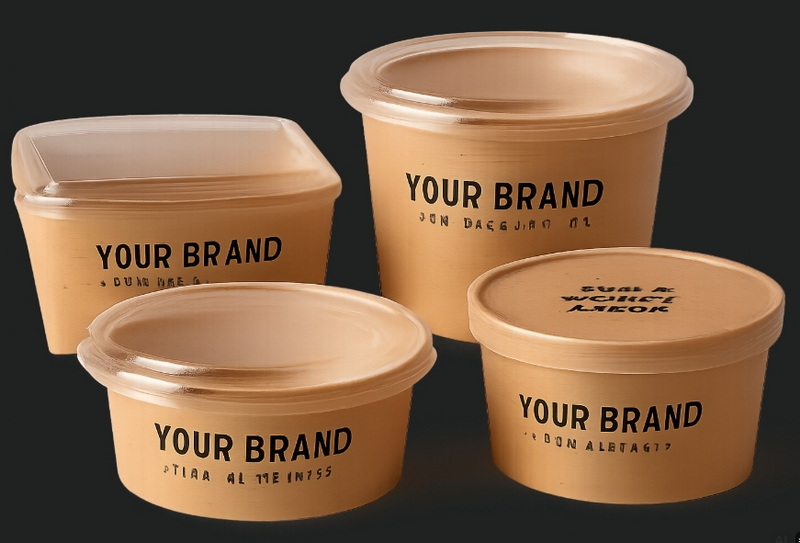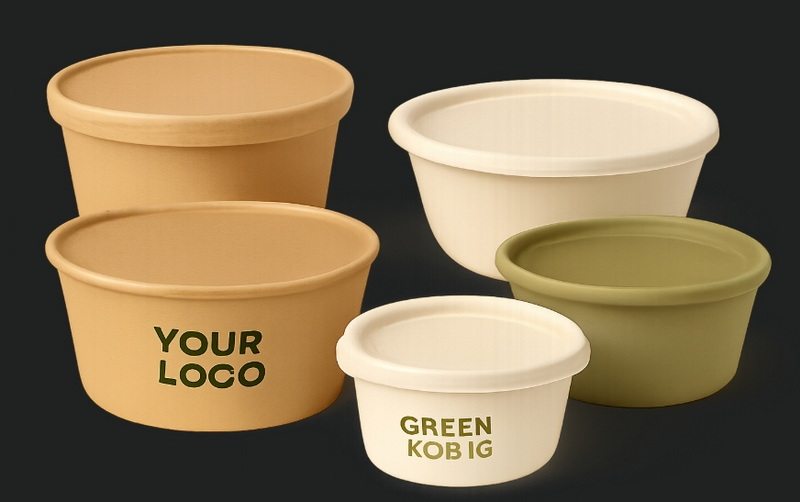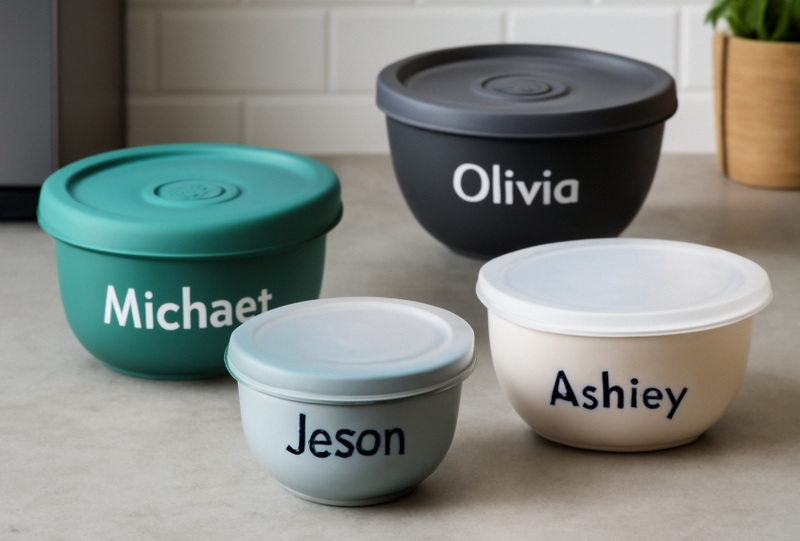
Content Menu
● Understanding the Role of a Bowl And Lid Producer
● Key Qualities of a Reliable Bowl And Lid Producer
>> Product Quality and Safety
>> Material Selection and Sustainability
>> Production Capacity and Technology
>> Customization and Branding Capabilities
>> Communication and Service
>> Certifications and Compliance
>> Reputation and Client Feedback
● The Manufacturing Process: How Bowls and Lids Are Made
>> Paper Bowl and Lid Production
>> Plastic and Fiber Bowl and Lid Production
● Sustainability and Environmental Impact
● Choosing the Right Bowl And Lid Producer: Step-by-Step
● Innovations in Bowl And Lid Production
● Global Trends Shaping the Industry
● Conclusion
● FAQ
>> 1. What materials are commonly used by Bowl And Lid Producers?
>> 2. How can I verify the quality of a Bowl And Lid Producer's products?
>> 3. Can Bowl And Lid Producers customize products for my brand?
>> 4. What sustainability options should I look for in a Bowl And Lid Producer?
>> 5. How do I ensure reliable supply from a Bowl And Lid Producer?
In today's competitive food industry, packaging is more than just a vessel for transporting meals—it's a statement about your brand, a safeguard for food quality, and a crucial part of the customer experience. Choosing the right Bowl And Lid Producer can define the success of your food service operation, whether you're running a restaurant, catering company, or food delivery service. This comprehensive guide explores what makes a Bowl And Lid Producer truly exceptional, from material choices and manufacturing processes to sustainability, customization, and customer service. By the end, you'll be equipped with the knowledge to make an informed, strategic decision for your business.

Understanding the Role of a Bowl And Lid Producer
A Bowl And Lid Producer is not just a supplier; they are a critical partner in your business's journey. Their products protect your food, maintain hygiene, and often provide the first tactile interaction your customer has with your brand. The right Bowl And Lid Producer can help you:
- Preserve food quality and freshness during transport
- Prevent leaks, spills, and contamination
- Enhance brand recognition through custom designs and printing
- Meet evolving regulatory and sustainability requirements
- Support operational efficiency with reliable supply and consistent product quality
Key Qualities of a Reliable Bowl And Lid Producer
Product Quality and Safety
The foundation of any reputable Bowl And Lid Producer is the consistent quality and safety of their products. High-quality bowls and lids should be:
- Leak-proof and sturdy to prevent spills and maintain food integrity during transit
- Resistant to both heat and cold, accommodating a range of foods from hot soups to chilled salads
- Manufactured from food-safe materials that do not leach chemicals or alter the taste of food
- Consistent in size and shape for compatibility with automated packing lines and efficient stacking
A reliable producer will have strict quality assurance protocols, including rigorous testing for moisture resistance, durability, and fit. This ensures that every batch meets your expectations and regulatory requirements.
Material Selection and Sustainability
Modern consumers and businesses are increasingly aware of environmental issues, making sustainable packaging a top priority. A reputable Bowl And Lid Producer should offer:
- Sustainable materials such as biodegradable paper, compostable fibers, or recyclable plastics
- Certifications for compostability, recyclability, and food safety
- Options for renewable resources like bamboo, bagasse, or PLA coatings
- Transparency about sourcing, manufacturing processes, and environmental impact
Choosing a producer who invests in sustainable materials not only reduces environmental impact but also enhances your brand's appeal to eco-conscious customers.
Production Capacity and Technology
Assessing the Bowl And Lid Producer's ability to meet your volume and timeline requirements is essential. Key factors include:
- Modern, automated production lines that ensure consistency and efficiency
- Scalability to handle large or fluctuating orders
- Advanced quality control systems to minimize defects and ensure product uniformity
- Flexible manufacturing for custom sizes, shapes, or special features
A producer with robust infrastructure can support your business's growth and adapt to changing market demands.
Customization and Branding Capabilities
Packaging is a powerful tool for brand differentiation. The best Bowl And Lid Producers offer:
- Custom printing for logos, colors, and patterns
- Design support to create unique packaging that stands out
- A variety of shapes and sizes to match your menu and portion requirements
- Innovative features such as vented lids, stackable designs, or tamper-evident seals
Customization not only sets your business apart but also enhances the overall customer experience.
Communication and Service
Efficient communication and responsive service are hallmarks of a dependable Bowl And Lid Producer. Look for:
- Clear and prompt responses to inquiries and orders
- Proactive updates on production and delivery status
- Willingness to provide samples for testing and evaluation
- Strong after-sales support for troubleshooting and issue resolution
A producer who values partnership will work closely with you to ensure satisfaction at every stage.
Certifications and Compliance
Compliance with international and local standards is non-negotiable for food packaging. A trustworthy Bowl And Lid Producer should provide:
- Food safety certifications (such as FDA, EU, or local equivalents)
- Environmental certifications (such as FSC, BPI, or compostability marks)
- Test reports for material safety, durability, and performance
- Documentation for traceability and regulatory audits
These certifications demonstrate a commitment to quality, safety, and ethical practices.
Reputation and Client Feedback
Past performance is a reliable predictor of future reliability. Investigate the Bowl And Lid Producer's:
- Client portfolio, especially well-known brands or long-term partnerships
- Customer testimonials and reviews
- Case studies of successful collaborations
- Industry awards or recognitions
Producers with a strong track record are more likely to deliver consistent value and service.
The Manufacturing Process: How Bowls and Lids Are Made
Understanding the production process helps you evaluate a Bowl And Lid Producer's technical capabilities and quality control.
Paper Bowl and Lid Production
1. Material Selection: High-quality paperboard or fiber is chosen for its thickness, weight, and sustainability profile.
2. Coating: A thin layer of PE, PLA, or water-based barrier is applied to enhance moisture and grease resistance.
3. Printing: Custom graphics or branding are printed using food-safe inks.
4. Die-Cutting: The coated paper is cut into precise shapes for the bowl and lid components.
5. Forming and Sealing: The bowl body is formed and the bottom is sealed using heat and pressure for leak-proof performance.
6. Rimming and Curling: The rim is curled for strength and comfort, then heat-sealed for durability.
7. Quality Control: Finished products are inspected for defects, consistency, and performance.
Plastic and Fiber Bowl and Lid Production
- Injection molding or thermoforming is used for plastic bowls and lids, ensuring precision and strength.
- Natural fibers like bamboo or bagasse are molded under heat and pressure for eco-friendly alternatives.
- Surface finishing and quality checks ensure the final product meets food safety and performance standards.

Sustainability and Environmental Impact
A responsible Bowl And Lid Producer recognizes the importance of minimizing environmental footprint. Key sustainability practices include:
- Using renewable or recycled materials for production
- Offering compostable and biodegradable options
- Reducing energy and water usage in manufacturing
- Minimizing waste through efficient processes and recycling programs
- Supporting closed-loop systems for packaging recovery and reuse
Sustainable packaging not only benefits the planet but also aligns your business with modern consumer values and regulatory trends.
Choosing the Right Bowl And Lid Producer: Step-by-Step
1. Define Your Requirements: Consider food types, temperature needs, order volumes, and branding goals.
2. Research Potential Producers: Look for those with relevant experience, strong reputations, and comprehensive product lines.
3. Request Samples: Test bowls and lids with your actual menu items for fit, durability, and appearance.
4. Evaluate Certifications: Verify food safety, environmental, and quality certifications.
5. Assess Communication: Gauge responsiveness and willingness to collaborate.
6. Check References: Speak with current or past clients to understand the producer's strengths and weaknesses.
7. Negotiate Terms: Clarify pricing, minimum order quantities, lead times, and after-sales support.
8. Start with a Trial Order: Begin with a smaller batch to confirm performance before scaling up.
9. Monitor Performance: Continuously review product quality, delivery reliability, and service responsiveness.
Innovations in Bowl And Lid Production
The packaging industry is constantly evolving, and Bowl And Lid Producers are embracing new technologies and trends to stay ahead. Current innovations include:
- Smart Packaging: Some producers are integrating QR codes, freshness indicators, or tamper-evident features to enhance safety and customer engagement.
- Advanced Barrier Coatings: New materials are being developed to provide superior moisture and grease resistance while remaining compostable or recyclable.
- Lightweighting: Producers are engineering bowls and lids to use less material without sacrificing strength, reducing costs and environmental impact.
- Digital Printing: High-quality, short-run digital printing allows for rapid customization and seasonal branding.
Global Trends Shaping the Industry
Several global trends are influencing the direction of Bowl And Lid Producers:
- Increased Demand for Takeout and Delivery: The rise of food delivery platforms has driven demand for secure, leak-proof, and branded packaging.
- Stricter Environmental Regulations: Governments worldwide are enacting laws to reduce single-use plastics and encourage compostable or recyclable packaging.
- Consumer Preferences: Customers are seeking packaging that is not only functional but also sustainable and visually appealing.
- Supply Chain Resilience: The pandemic highlighted the importance of reliable supply chains, prompting producers to invest in automation and local sourcing.
Conclusion
Selecting a quality Bowl And Lid Producer is a strategic investment in your food business's reputation, operational efficiency, and sustainability. By prioritizing product quality, material safety, production capability, customization, and environmental responsibility, you position your brand for long-term success. The right Bowl And Lid Producer is not just a supplier—they are a partner in delivering exceptional dining experiences to your customers. Take the time to evaluate your options thoroughly, and you'll reap the benefits in every meal you serve.

FAQ
1. What materials are commonly used by Bowl And Lid Producers?
Bowl And Lid Producers typically use paperboard, plastic, bamboo, or bagasse. Paperboard and fiber-based options are popular for their sustainability and compostability, while plastics offer durability and clarity for certain applications.
2. How can I verify the quality of a Bowl And Lid Producer's products?
Request product samples and test them with your menu items. Check for certifications related to food safety, environmental standards, and quality assurance. Review feedback from other clients to gauge consistency.
3. Can Bowl And Lid Producers customize products for my brand?
Yes, many Bowl And Lid Producers offer custom printing, unique shapes, and tailored features such as vented lids or special coatings. Discuss your branding and functional needs during the selection process.
4. What sustainability options should I look for in a Bowl And Lid Producer?
Seek producers who use renewable or recycled materials, offer compostable or biodegradable products, and have certifications for environmental responsibility. Ask about their production processes and waste management practices.
5. How do I ensure reliable supply from a Bowl And Lid Producer?
Assess the producer's production capacity, technology, and supply chain management. Establish clear communication channels, set expectations for lead times, and start with a trial order to verify reliability.

















